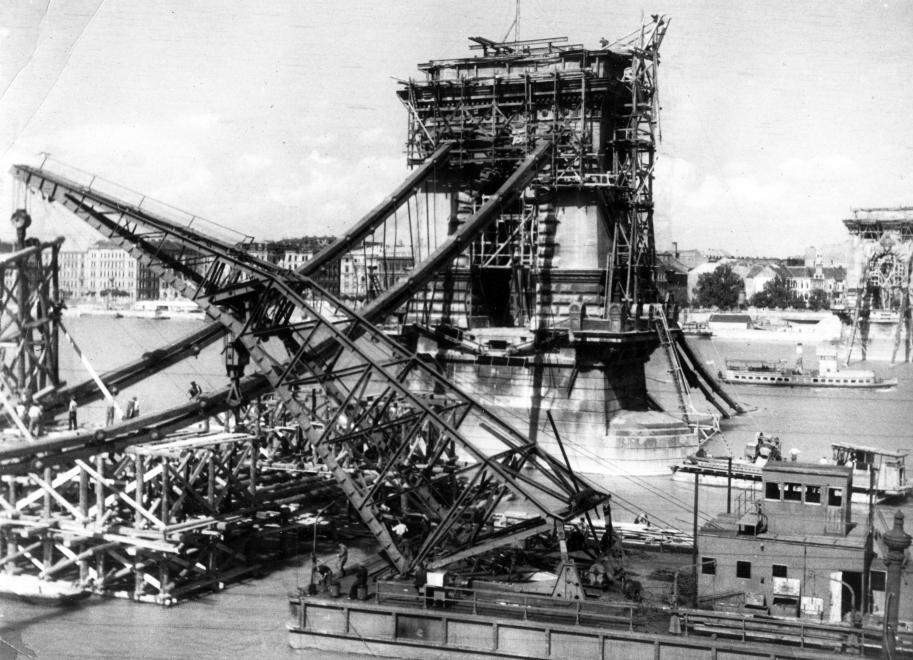Historical context and Destruction Volumes
We increase our chances of a successful recovery of Ukraine by studying and borrowing the experience of foreign cities in post-war reconstruction. So, today we will consider how the Hungarian capital, Budapest, was restored.
Hungary remained one of Hitler's last allies at the time of the last years of World War II. In addition, the country had strategically important for the German army deposits of oil. Therefore, the capital was turned into a fortress, which had to hold out to the last and ensure the operation of the military machine.
Budapest was severely damaged in 1944-1945 during the 50-day siege and the subsequent battle of the Soviet troops for the city. Violent street fighting led to destruction, which can only be compared to the devastation during the Battle of Stalingrad, everyone was fighting for every street and house. The city was also bombed by the Western Allies.
The mayor of Budapest in 1945-1947, József Kővágó, indicated in his work “The struggle of Budapest for a new life” that 3.8% of buildings were completely destroyed in the city and 23.1% were severely damaged. Moreover, only 26% of the buildings remained relatively intact.
The Buda fortress was the most damaged one, which was the last stronghold of the Germans. Historically, the city consisted of two parts, Buda and Pest, and Nazi troops have destroyed all bridges across the Danube and severed ties between the two banks during the retreat.
Reconstruction Features
The rebuilding began just after the siege of the city ended. The authorities/citizens were engaged in clearing the rubble and major repairs of buildings during the first years. The post-war reconstruction was point and selective for a long time. For example, the synagogue of Rumbach, as a symbol of the tragic events like the deportation of Jews, was in a neglected state for several decades and the right to ownership on it constantly passed from hand to hand.
In general, the communist authorities introduced an approach of “rejection of excess,” so many buildings were restored or rebuilt without valuable historical details. The already erected buildings were criticized for “inconsistency with socialist values.” The party called the modernist bus station on Erzsébet Square expensive, ugly, and “imitating the villas of American billionaires in the Wild West.”
It is interesting that the damaged architectural heritage of Budapest was saved by the lack of funding for both full restoration and dismantling.
 Chain bridge Széchenyi © FORTEPAN by István Mihalik
Chain bridge Széchenyi © FORTEPAN by István Mihalik
The cultural foundation was also restored in the city. Valuables were actively returned to the Budapest Museum. Most of the works exported by the Nazis have returned to the Museum of Fine Arts in 1947, which was affected by the hostilities. But the authorities saved money on public buildings, which functioned for a long time in the surviving houses, while the new infrastructure was not constructed.
It is important that the residents of Budapest did not stand aside and were involved in the reconstruction. The government financed the work of brick factories and provided loans to residents for the restoration of their homes in 1945. The townspeople completed the repair of damaged roofs in 26,000 houses during the spring of 1948. At the same time, the authorities increased the number of housing by dividing the large old apartments into smaller ones (what we know as municipal housing).
Mass construction began when there was an active industrialization and an influx of new residents into the city. A typical design was developing. Moreover, the authorities wanted the luxurious socialist “palaces for workers” instead of modernism and functionalism. It is interesting that urban planners looked for inspiration in the architectural styles of past eras, so, many buildings were constructed in the Renaissance and Classicism style during the 50s. The soviet military memorials, of course, were erected in Budapest, which are hard to get rid of even now.
In fact, Hungarian architects often changed their minds. Despite the ban of the authorities, they worked in the style of functionalism for some time, which provided for the buildings to be designed primarily considering their function, and the details of the facades and internal planning should have been minimal. This can be explained by the fact that Hungary was one of the most rebellious satellite countries of the USSR, so, the influence of the Communists here was not undisputed. Moreover, architects could consider the experience of reconstruction of neighboring Western countries.
Rationalism began to dominate during the 50s — the houses were distinguished by strictness and simplicity of the constructions, they were similar in form, design, and functional purpose. However, this was not for a long time — interest in the magnificent architectural past increased again in the 60s. This is evidenced by the Venice Charter adopted in 1964, which formulated the basic principles for the protection, restoration of historical monuments, and landmarks. Cultural monuments have been carefully restored in Budapest, one of which was the already mentioned Buda fortress.